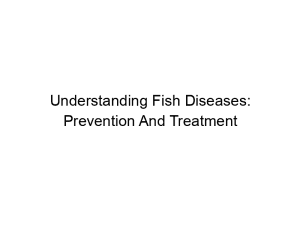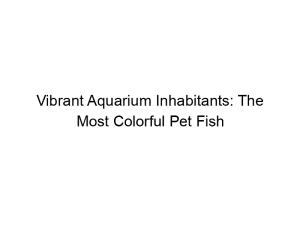Have you ever wondered about the fascinating journey of a tiny, seemingly simple creature that has captivated millions for centuries? This is the story of the goldfish, an aquatic marvel whose history is as rich and colorful as its scales. The History of Goldfish: From Ancient China to Today isn’t just about pretty fish; it’s a tale of selective breeding, cultural significance, and global trade. In this in-depth exploration, we’ll uncover the goldfish’s origins in ancient China, its evolution through various cultures, its role in modern aquariums, and the surprising science behind its vibrant colors. Get ready to dive into a world of shimmering scales and captivating history!
The goldfish’s story begins in ancient China, possibly as early as the Jin Dynasty (266-420 AD). While the exact origin is debated, evidence points to
the natural mutation of the common carp (Cyprinus carpio) into a golden hue. These naturally occurring gold-colored carp were initially valued for their aesthetic appeal, symbolizing wealth and prosperity. Early Chinese kept them in ponds and ornate containers, marking the beginning of selective breeding. This involved choosing carp with the most intense golden coloration and breeding them together, gradually enhancing the golden hue and developing the characteristic features we associate with goldfish today. Their popularity quickly spread throughout imperial courts and eventually into wider society.
Cultural Significance in Imperial China
Beyond their beauty, goldfish held significant cultural meaning in ancient China. They were often associated with good fortune, longevity, and prosperity. Their vibrant color symbolized the sun and wealth, making them ideal symbols for imperial power and status. Goldfish were frequently depicted in artwork, pottery, and literature, further solidifying their position as esteemed creatures. The meticulous breeding and care given to these fish emphasized the value placed upon them within Chinese society.
The Spread of Goldfish Beyond China
Journey to Japan and Beyond
From China, goldfish embarked on a journey across continents. By the 12th century, they had reached Japan, where they were embraced with equal enthusiasm. Japanese breeders continued the work of selective breeding, creating diverse breeds with unique fin shapes, body types, and colors. The Japanese further refined the art of keeping goldfish, introducing specialized ponds and containers designed to enhance their beauty and well-being. From Japan, the goldfish’s journey continued westward.
Introduction to Europe and the Americas
Goldfish eventually arrived in Europe during the 17th century, initially as prized possessions of the wealthy elite. Their introduction to Europe wasn’t a simple affair; they were carefully transported, often requiring months-long voyages. Their captivating beauty quickly captivated Europeans, leading to widespread interest in keeping and breeding goldfish. The establishment of specialized fish farms aided their popularity. From Europe, goldfish eventually made their way across the Atlantic to the Americas, becoming a beloved pet in homes across the globe.
The Evolution of Goldfish Breeds
A Kaleidoscope of Colors and Shapes
Centuries of selective breeding have resulted in an astonishing array of goldfish breeds. Today, hundreds of varieties exist, each possessing unique characteristics. This genetic diversity is a testament to human ingenuity and the remarkable plasticity of the goldfish genome. Some popular breeds include the common goldfish (a relatively simple breed), the fantail goldfish (known for its elaborate tail fins), the telescope goldfish (with its distinctive bulging eyes), and the lionhead goldfish (with its impressive head growths).
The Science Behind Goldfish Coloration
The vibrant colors of goldfish are a result of variations in their pigment cells, called chromatophores. These cells contain different types of pigments, including melanin (black and brown), carotenoids (yellow, orange, and red), and iridophores (reflecting light and creating iridescent effects). Selective breeding has targeted these pigment cells, leading to the diverse coloration observed in different breeds. Specific genes control the expression and distribution of these pigments, resulting in the wide range of colors and patterns found in today’s goldfish.
Goldfish in Modern Aquariums and the Pet Trade
The Home Aquarium: A Thriving Ecosystem
Today, goldfish are among the most popular aquarium pets worldwide. Home aquariums offer a carefully controlled environment, allowing hobbyists to maintain a healthy population of goldfish. This involves understanding water chemistry, filtration systems, and the proper diet to keep the goldfish happy and healthy. Many resources exist to support responsible goldfish ownership, from online communities to specialist shops.
The Goldfish Industry: A Global Phenomenon
The goldfish industry is a multi-billion dollar global enterprise, encompassing breeding, distribution, and the sale of aquarium supplies. Large-scale breeding operations ensure a continuous supply of goldfish for the pet trade, while a thriving market exists for aquarium supplies, ensuring that hobbyists have the resources to care for their goldfish properly. The industry also drives advancements in goldfish breeding techniques and research into their welfare.
The Care and Keeping of Goldfish
Creating the Perfect Habitat
Proper care is essential for the well-being of goldfish. This involves providing a spacious tank with adequate filtration, regular water changes, and a balanced diet. Goldfish produce a considerable amount of waste, so a powerful filter is essential. Overcrowding can lead to stress and disease, highlighting the importance of providing ample space for each fish. The tank should also provide hiding places and enrichments to mimic their natural environment.
Nutrition and Diet
A balanced diet is crucial for the health and vitality of goldfish. Commercial goldfish flakes and pellets provide the necessary nutrients, but occasional treats like live or frozen foods can add variety. Overfeeding is a common mistake, so it’s crucial to feed goldfish in moderation. Observing their behavior and adjusting feeding schedules based on their eating habits ensures optimal nutrition. A well-fed goldfish will have vibrant colours and energetic behavior.
Common Diseases and Health Issues in Goldfish
Identifying and Treating Illnesses
Goldfish, like any other living creature, are susceptible to various diseases. Common issues include fin rot, ich (a parasitic infection), and dropsy (a symptom of various underlying issues). Early detection is crucial for effective treatment. Maintaining good water quality and a stress-free environment significantly reduces the risk of illness. If a goldfish shows signs of illness, immediate attention from a veterinarian specializing in aquatic animals is recommended.
Preventing Disease Through Proper Care
Preventative measures are key to keeping goldfish healthy. Regular water changes, appropriate filtration, and a balanced diet greatly reduce the likelihood of disease outbreaks. Quarantining new goldfish before introducing them to an existing tank is essential to prevent the spread of potential pathogens. Vigilance and careful observation can often detect early signs of illness, allowing for timely intervention and treatment. A healthy environment leads to a healthy goldfish.
Goldfish Genetics and Breeding
Understanding Inheritance in Goldfish
Goldfish genetics is a complex field, with many genes influencing traits such as color, fin shape, and body type. Understanding these genetic principles is crucial for successful breeding. Specific gene combinations determine the expression of these traits, leading to the wide variety of goldfish breeds observed today. Experienced breeders often use pedigree charts to track genetic lineage, aiding in selective breeding programs.
Ethical Considerations in Goldfish Breeding
Ethical considerations are paramount in goldfish breeding. Breeders should prioritize the health and welfare of their fish, avoiding the selection of traits that compromise their overall health or well-being. Creating extreme variations that negatively impact a goldfish’s quality of life is ethically questionable. Responsible breeding practices ensure the long-term health of goldfish populations and the sustainability of the industry.
The Future of Goldfish
Conservation and Sustainable Practices
The future of goldfish depends on sustainable practices within the industry. Responsible breeding, avoiding over-exploitation, and promoting ethical sourcing are critical for the long-term health of goldfish populations. Reducing the environmental impact of the industry and promoting responsible pet ownership are crucial for the future of these captivating creatures. Sustainable practices safeguard the goldfish for generations to come.
Advances in Goldfish Research
Ongoing research into goldfish genetics, health, and behavior continues to expand our understanding of these fascinating creatures. This knowledge is vital for improving breeding techniques, developing better treatments for diseases, and advancing our knowledge of aquatic animal welfare. Research also informs the development of better aquarium environments, ensuring the well-being of goldfish in captivity.
The Goldfish in Art and Literature
Goldfish as Artistic Inspiration
Goldfish have inspired countless artists and writers throughout history. Their beauty and symbolism have been captured in paintings, sculptures, and literature across various cultures. Their vibrant colors and graceful movements make them ideal subjects for artistic expression, while their symbolic associations enhance their presence in creative works.
Goldfish in Popular Culture
Goldfish have also infiltrated popular culture, appearing in films, television shows, and video games. Their presence in these media further highlights their enduring appeal and global recognition. The use of goldfish in pop culture often reflects a whimsical and light-hearted portrayal, reinforcing their position as beloved pets.
Frequently Asked Questions
What is the lifespan of a goldfish?
The lifespan of a goldfish varies depending on the species and the quality of care. Common goldfish can live for 10-20 years, while some fancy goldfish breeds may have shorter lifespans. Providing proper care, including a spacious tank, clean water, and a balanced diet, significantly increases their lifespan.
How many goldfish can I keep in a small tank?
Keeping too many goldfish in a small tank is detrimental to their health. Overcrowding leads to poor water quality, stress, and increased susceptibility to diseases. As a general rule, a larger tank is always better. Consult resources on appropriate tank sizes based on the size and number of goldfish.
What do goldfish eat?
Goldfish primarily eat commercial goldfish flakes or pellets, providing a balanced diet. However, occasional treats of live or frozen food can be beneficial, adding variety to their diet. Avoid overfeeding, as this leads to water quality issues and obesity in goldfish. Observe their feeding habits and adjust the amount based on their consumption.
How often should I change the water in my goldfish tank?
Regular water changes are essential to maintain good water quality and prevent the buildup of waste. The frequency of water changes depends on the size of the tank and the number of goldfish. As a general guide, partial water changes (around 25%) once or twice a week are recommended. Use dechlorinated water to avoid harming the goldfish.
Are goldfish social animals?
Goldfish can be social animals, particularly when kept in groups of similar size and temperament. However, introducing new goldfish to an established group needs careful consideration, especially if it’s a new tank mate. Observe their interactions and take steps to resolve any aggression, if necessary. Generally, similar-sized goldfish get along better.
What are the signs of a sick goldfish?
Signs of a sick goldfish can include lethargy, loss of appetite, unusual swimming patterns, discoloration, fin rot, or white spots (ich). If you observe any of these signs, isolate the affected goldfish, monitor the water quality, and consult a veterinarian specializing in aquatic animals for appropriate diagnosis and treatment.
Final Thoughts
The journey of the goldfish, from its humble beginnings in ancient China to its global presence today, is a testament to its enduring appeal and adaptability. Its evolution through selective breeding has produced a dazzling array of breeds, each with unique characteristics. However, responsible care and ethical breeding practices are paramount to ensuring the long-term health and well-being of these captivating creatures. Understanding the history, biology, and care requirements of goldfish allows us to appreciate their beauty and value while ensuring their continued presence in our homes and in the natural world. Remember that providing proper care ensures your goldfish enjoys a long and healthy life, filled with vibrant colors and playful movements. So, whether you’re a seasoned aquarist or just starting your journey in the fascinating world of goldfish keeping, remember the rich history behind these little swimmers and commit to providing them with the best possible life. Let’s keep the legacy of the goldfish thriving for generations to come!




